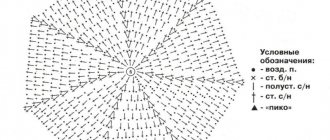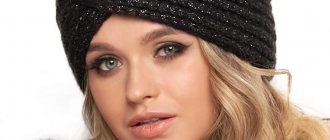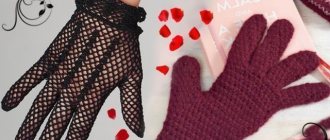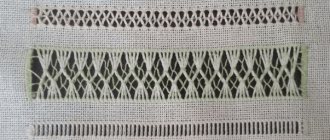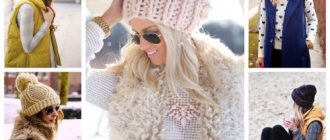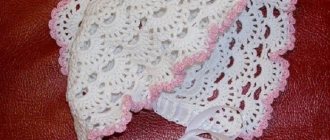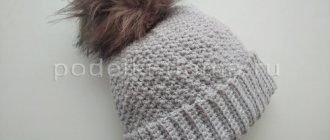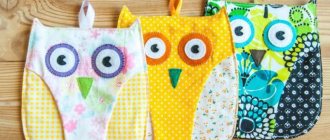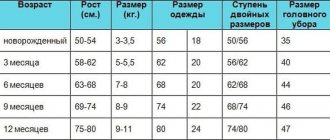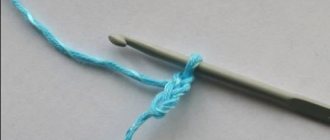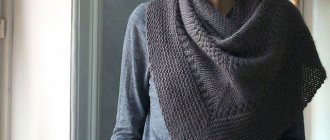Reads: 2,776
Reading time: 5 min.
no comments
Ballet flats have received the status of one of the most stylish and comfortable shoe variations, which not only has a large audience of fans among little girls and young ladies, but also enjoys undeniable popularity among adult representatives of the fair half of humanity. Just think before you buy ballet shoes that you can crochet them yourself in just one evening! And the amount of materials that you will have to purchase and spend to create a masterpiece will be minimal and will not leave you at a loss. Products of our own production can be used primarily as cozy, weightless slippers for the house, and if you attach them to a solid rubber sole, they can easily pass for a walking version of summer women's shoes.
Yarn selection
There are several types of yarn, each of which has special characteristics:
- Natural. These include linen, cotton, wool, silk and others. Linen is limited in shades, wool is difficult to care for, cotton comes in a wide palette, but takes quite a long time to dry. In this regard, it is recommended to use silk threads for knitting shoes if the naturalness and environmental friendliness of the material are important.
- Artificial. These are polyester and acrylic, which are extremely easy to care for. The products do not lose their shape after washing, do not cause allergies and dry quickly, making them ideal for creating knitted ballet shoes.
- Mixed. They are considered the best option; they contain partly natural and partly synthetic threads, due to which they have all the features listed above.
When choosing yarn, it is important to choose the optimal thickness. A finer openwork pattern will be provided by silk fibers, and ballet flats in the form of house slippers can be safely knitted from thick wool. Another important parameter is the color scheme. Bright, rich shades are more suitable for summer, and pastels for spring. Deeper and darker colors pair harmoniously with warm clothing and are suitable for winter. When making it, it is better to choose a single-color yarn or combine a maximum of 2-3 shades, then the shoes will not look too colorful. Often linked models are created like this: one color for the sole, another for the upper.
Linen
Cotton
Wool
Silk
Acrylic
Polyester
Mixed
Booties for newborns
If you or someone you know is expecting a new baby, newborn booties will be a good attribute for a discharge, christening, photo shoot, or just for regular walks. Such a thing can be a good gift and memento. You can connect them very simply and quickly.
By using different types of decor, such booties can be an excellent gift for the New Year holidays, March 8, or simply for any memorable date.
A master class on crocheting everyday booties for a newborn girl is attached below.
We will need: a hook of 2-3 sizes, 2 colors of thread, possibly leftovers. Don't forget about the composition of the threads.
Let's begin. According to the pattern, we knit the sole. Don't forget to measure the knitting length, it may vary slightly due to the thickness of the threads and the hook used. The size of a newborn's foot is about 9 cm.
We knit the sidewall according to the pattern.
We tie the finished sidewall with thread for decoration. We knit with single crochets. If desired, you can choose ruffle decor.
The bootie details are ready.
We fold the top part, forming a wrap, and sew the parts together.
On one side of the booties we sew a chain of air loops in the shape of a clasp. On the other side we will sew a beautiful button. We suggest using a flower clasp, but the solution can be very varied.
Repeat all the steps to make a second children's ballet shoe.
Required Tools
You can knit ballet shoes with knitting needles or crochet. In the first case, it is recommended to supplement the yarn with a felt sole (it should be taken into account that the thread consumption will be large, and a lot of time will be spent on creating the product). In the second case, such a need disappears, so most often beginners prefer to crochet ballet shoes.
The hook consists of three parts: handle, head and barb. The hooked end, called the head, should not be too sharp, otherwise it may cause injury. The round shape will not allow you to knit quickly, so you need to choose something in between. Only experienced needlewomen need a pen. If you are crocheting for beginners, it is better to abandon the handle altogether, since it will not allow you to control the tension of the loops.
When choosing, you need to consider the material of the hook. Steel products are considered the most comfortable to use, and they are also durable. Aluminum hooks are lightweight, but they can stain light-colored thread. Models made of plastic do not injure your hands, are light in weight and are cheap, which is why they are especially popular. But there is also a drawback - fragility. Wooden products quickly lose their appearance and can become electrified. A bone hook can be a good tool when creating ballet shoes with your own hands, although it costs more than steel or aluminum.
The hook number indicates the thickness of its working part. You can use it as a guide when purchasing a tool. Experienced craftsmen advise starting knitting ballet shoes using three hooks: No. 3 is needed for the sole, 1 and 2 for working on the upper part.
Spokes
Hooks
For felt soles
Over the past couple of years, crocheting home ballet flats and slippers with felt soles has gained great popularity. In this case, the sole is not knitted, but cut to the shape of the child’s foot from a purchased insole. Then the insole is evenly sheathed with thread. This is done so that you can start knitting. Then it continues according to the selected description or diagram.
Related article: How to make pom-poms from yarn, thread and fur for a hat with your own hands with video
Taking measurements
To crochet cozy soft slippers, you first need to measure your foot size. For these purposes it is necessary:
- prepare a sheet of white paper, pen or pencil;
- completely outline the leg;
- measure the length from the edge of the big toe to the heel;
- add about 10 mm to the result.
It should be remembered that a lot depends on the elasticity and type of yarn. It's easier to count by the number of loops. For example, 40 loops (air) need to be cast on for a size 39 leg. The width of the foot is also important; this is also an individual parameter, so when knitting it is worth doing an intermediate fitting. You can focus on house slippers.
To ensure accurate measurements, you need to measure your foot at the end of the day. This is necessary so that the feet have time to rest from the load and return to their usual volumes without swelling. For demi-season shoes, you can additionally wear a thin sock; for summer shoes, this is not necessary.
Knitting stages
The procedure for getting started depends on the selected tool. If knitting needles are used, first you need to make 2 loops, which are then strung on one or 2 knitting needles connected together. This will make the process of creating the second row easier. Taking a hook, you will need to make one loop, then a series of air loops in the form of loose braids, these will become the beginning of the product.
Since the crochet hook is more convenient to use than knitting needles, it is often chosen by beginners. If the shoes did not turn out as planned, then the part with the defect can always be unraveled by simply pulling the thread. The use of knitting needles eliminates this possibility. Below are the steps in the process of crocheting ballet flats:
- The first row will be the basis for the sole. First you need to cast on 40 loops. The initial chain should be tied in a circle. The pattern will be as follows: from the 2nd loop, 2 single crochets (SC), then 19 SC, after 1 half-column (needed for expansion). Then 17 double crochets (dc), starting from the last loop, 5 dc and around in reverse order.
- Crochet the next row must begin with a lifting air loop. If you look at any diagram with a description, you can see that the knitting order will be as follows: above the single crochets there should be similar loops, above the half-columns, respectively, half-columns. That is, the order is observed in the same way as in the previous step. To round the foot, you need to add 3 dc, for the toe - 2 dc, for the heel - 5 stitches from the first row.
At the end, you should add another 5 RLS, rounding the toe and heel in parallel, but already 5 and 3 additions, respectively. While working, you need to ensure that the sole of the knitted ballet shoes matches the size of the insole.
Work on the upper part of the product begins with using yarn of a different color. With its help, you need to throw 5 rows without a crochet, and now the movement will not be in a circle, but in a spiral. The next step is to narrow the toe. To do this, the front part of the loop row is divided into 6 and reductions are made in these areas. To avoid confusion, it is worth marking the places with pins or paper clips.
Decrease of the following rows must be done on every 4 columns, then 3, 2 and one. You need to finish the top row with 4 sc, then turn in the opposite direction and knit 3 sc. Having reached the center, turn again and decrease through 1 loop. This continues until the height and width of the ballet shoes are as needed.
Knitting patterns for ballet shoes will be similar to those using a crochet hook. The only difference is that after processing the insole, you need to tie a felt sole, as well as in the method of starting knitting, as mentioned above.
Master class on knitting
Let's take a step-by-step look at how to crochet ballet slippers. The diagram and description are quite simple, even a novice craftswoman can handle them. To work, you need a 2.5 or 3 mm hook and suitable yarn.
Yarn selection
To knit a truly warm pair, you will need wool or wool blend yarn. This thread warms well and retains heat, but is not at all suitable for constant wear and wears out quickly.
Therefore, in this case, you should knit footwear either from a different yarn, for example acrylic, or make them double from threads of different compositions, or use felt insoles.
In addition, the size of the hook depends on the chosen yarn. For example, “Children's whim”: the manufacturer stated that it is suitable for 3 mm knitting needles. This means you will need a hook with the same number. However, if you take a 1.5 hook, then using the same pattern, without changing the number of loops, you can knit ballet shoes for a child .
How to decorate a product
Knowledge of how to knit ballet shoes has been acquired, all that remains is to work on the decor. Home or outdoor ballet shoes will have a finished appearance due to various decorations. For these purposes, a satin ribbon that matches the shade is used. It can be glued using hot glue or woven into the side of the products. Ideal for decorating ballet shoes for girls.
You can also glue rhinestones, artificial semi-pearls, or any stones you like. Nude shades are well emphasized by eco-decor in the form of jute twine of various thicknesses. If you don’t want to spend time creating jewelry, you can purchase ready-made elements, for example, metal brooches and cabochons.
If the ballet shoes are plain, a knitted decor made from yarn of other colors will look original. For example, these could be plants or flowers in the form of individual elements. A bright composition will look especially impressive against a black background.
Classic crochet ballet shoes
Girls love delicate models with beautiful design. And the little fashionista will perceive white ballet shoes with real delight.
Although this model can be successfully made into an adult size. For the sole we use a convenient scheme:
When the foot is ready, move on to the side part. It knits evenly, only in the toe area does the decrease begin. To do this, knit the columns of the current row into the bases of the previous one through one loop.
You can decorate girls' shoes in different ways. Pompoms on laces.
With bows.
or flowers.
Ballet flats for a boy should be knitted using the same technology, just choose a strict model.
